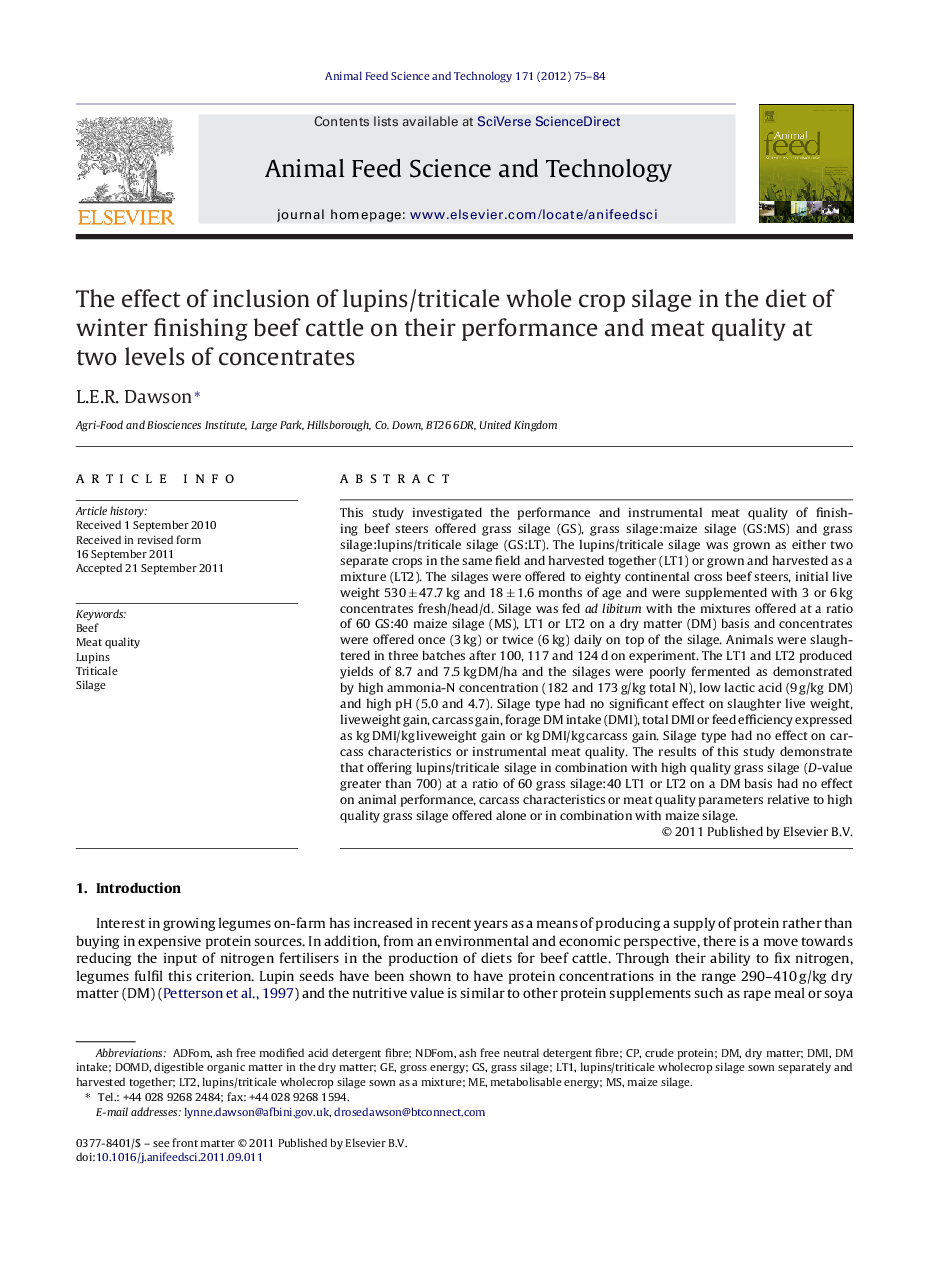| Article ID | Journal | Published Year | Pages | File Type |
|---|---|---|---|---|
| 8492149 | Animal Feed Science and Technology | 2012 | 10 Pages |
Abstract
This study investigated the performance and instrumental meat quality of finishing beef steers offered grass silage (GS), grass silage:maize silage (GS:MS) and grass silage:lupins/triticale silage (GS:LT). The lupins/triticale silage was grown as either two separate crops in the same field and harvested together (LT1) or grown and harvested as a mixture (LT2). The silages were offered to eighty continental cross beef steers, initial live weight 530 ± 47.7 kg and 18 ± 1.6 months of age and were supplemented with 3 or 6 kg concentrates fresh/head/d. Silage was fed ad libitum with the mixtures offered at a ratio of 60 GS:40 maize silage (MS), LT1 or LT2 on a dry matter (DM) basis and concentrates were offered once (3 kg) or twice (6 kg) daily on top of the silage. Animals were slaughtered in three batches after 100, 117 and 124 d on experiment. The LT1 and LT2 produced yields of 8.7 and 7.5 kg DM/ha and the silages were poorly fermented as demonstrated by high ammonia-N concentration (182 and 173 g/kg total N), low lactic acid (9 g/kg DM) and high pH (5.0 and 4.7). Silage type had no significant effect on slaughter live weight, liveweight gain, carcass gain, forage DM intake (DMI), total DMI or feed efficiency expressed as kg DMI/kg liveweight gain or kg DMI/kg carcass gain. Silage type had no effect on carcass characteristics or instrumental meat quality. The results of this study demonstrate that offering lupins/triticale silage in combination with high quality grass silage (D-value greater than 700) at a ratio of 60 grass silage:40 LT1 or LT2 on a DM basis had no effect on animal performance, carcass characteristics or meat quality parameters relative to high quality grass silage offered alone or in combination with maize silage.
Keywords
Related Topics
Life Sciences
Agricultural and Biological Sciences
Animal Science and Zoology
Authors
L.E.R. Dawson,
